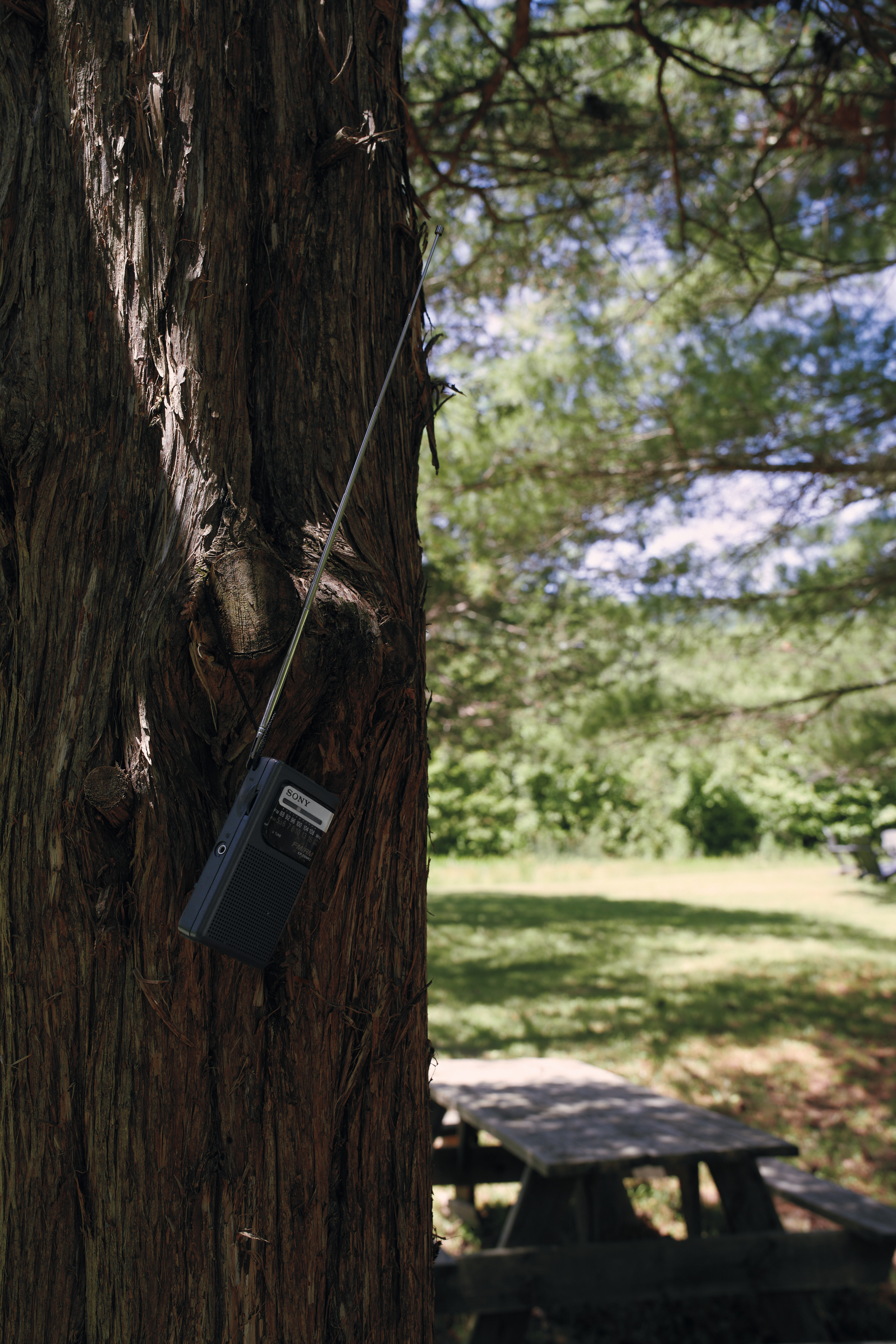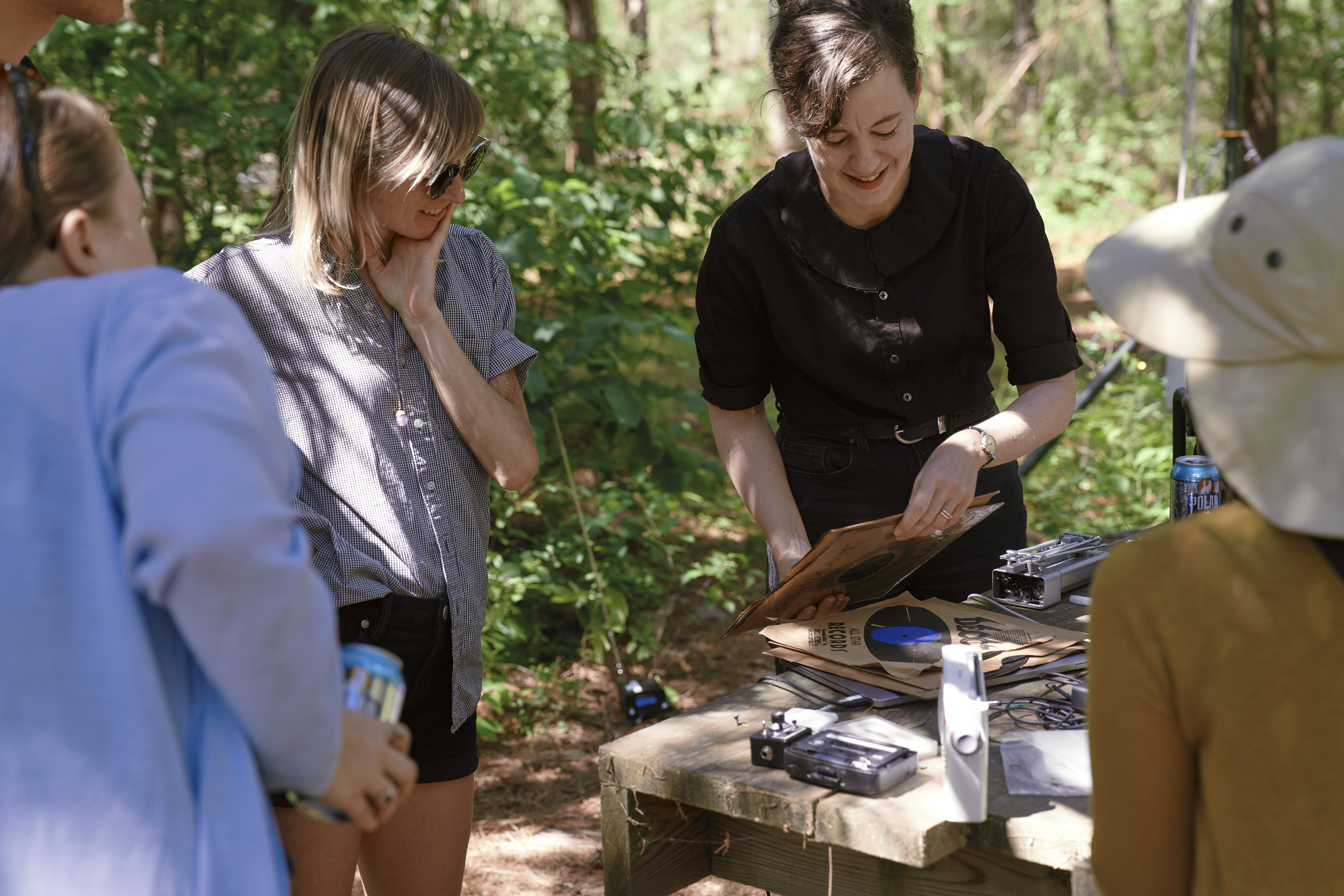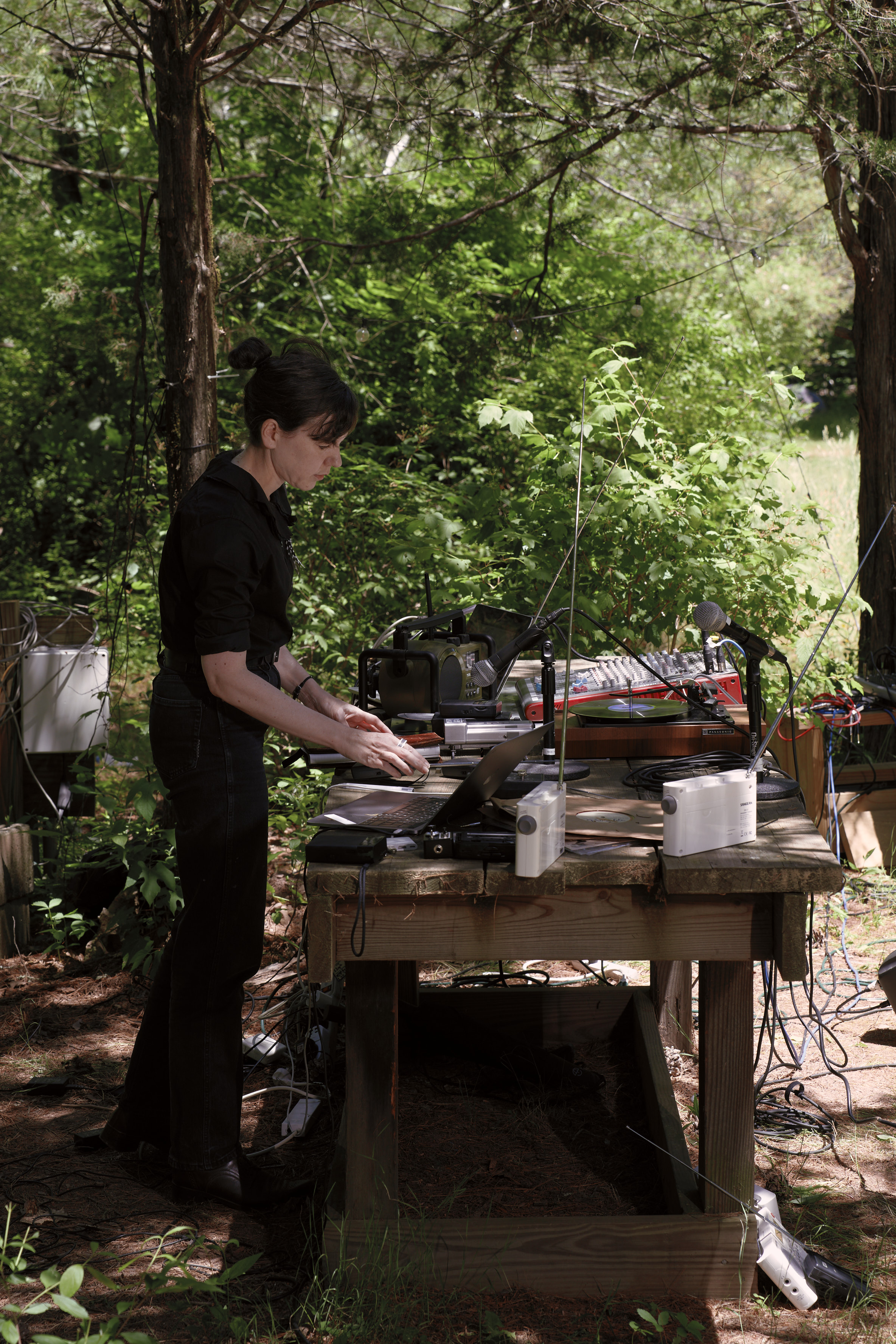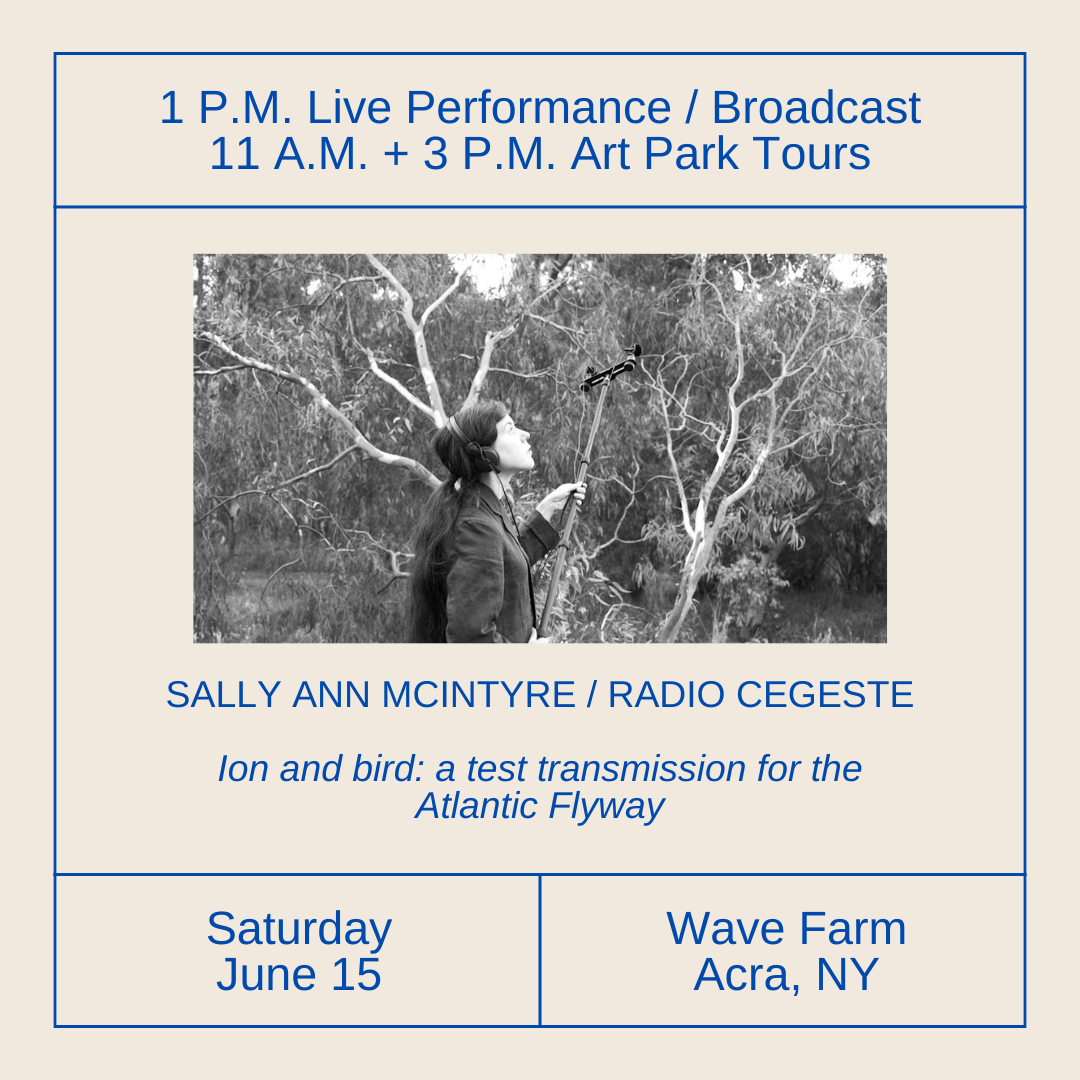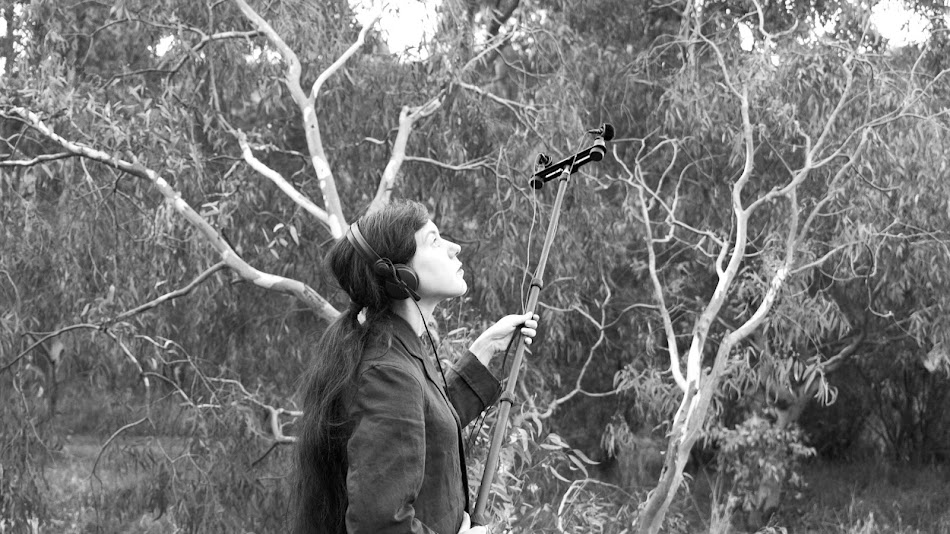About Wave Farm
Wave Farm Artist-in-Residence: Sally Ann McIntyre / radio cegeste
5662 Route 23 | Acra, NY 12405 | 518-622-2598
http://wavefarm.org/
- Radio is sky. It sings through the mouths of birds on their journeys who navigate by infrasound and listen to the aurora as the sound of the lightning.
Radio is terrestrial. It is in the rocks, in the earthquake prone and mountainous zones of Te Wai Pounamu the South Island of Aotearoa New Zealand where the small birds called pīwauwau, or Rock wrens, speak a language that is almost too high for human hearing.
Migratory birds use magnetoreception, detecting the Earth’s magnetic field, as one of their tools to navigate on their long-distance journeys. With a frequency range of hearing considerably lower than human listening, certain species also orient through low-frequency infrasound, along coastline and oceanic landmarks that may serve as orientation beacons. ion and bird considers the links between this still indeterminate set of techniques within the embodied senses of birds, known since the nineteenth century and once mythicized as the “sixth sense,” and the sonic expression of bird songs and calls. In tuning in to less audible sky narratives and correspondences, it considers collaboration and communication with non-human species, intelligence beyond human perception, multispecies media histories, and radio as translation between worlds. As the VLF radio receiver converts the aurora's radio waves into a frequency audible to the human listener, and the crystal radio set harnesses tiny crystals of the minerals pyrite and galena within the simplest type of functional radio receiver, so may the navigational abilities of birds, emerging in part from magnetite-based receptors in beaks, or quantum sensing in avian eyes and ears, be understood to make audible a vibratory, embodied strata of forces that normally remains inaudible.
Using an expanded palette of electroacoustic and radiophonic instrumentation including bird-tracking telemetry systems used with migratory shorebirds on the Atlantic Flyway, and with an ear to more-than-human material histories of radio transmission, reception, and locality, ion and bird will tune into an aesthetic correspondence between bird vocalization and space weather, considering how the otherworldly chirps, crackles, and squeaks created by geomagnetic storms in the Earth’s ionosphere resemble the contact calls of migratory birds, and the phenomena referred to as the electromagnetic or auroral dawn chorus, sounds remarkably like birdsong. Mcintyre will be joined in-residence by her long-time partner and collaborator, film-maker and photographer Campbell Walker who will document the project in preparation for a standalone film.
Sally Ann McIntyre is an artist, writer, and expanded radio-maker from Aotearoa New Zealand/lutruwita Tasmania living in Naarm Melbourne. Her research-led practice has paid increasing attention to sites where ecological and cultural narratives (recorded/transmitted signals/empiricism/documentary/zoologic museum collections) meet unheard, unremembered, untranscribed, or untranslated aspects of geographies (bad reception/pseudoscience/silence/extinction/electromagnetism/noise). Often working critically with the sonic representation of environments, the one-way collecting drives of the practice of field recording, conceived as a form of technologized “voluntary memory,” meet a contrasting, liminal “involuntary memory” often gleaned from the practice of small-scale radio transmission as a form of two-way, site-receptive “fieldwork” and an associated focus on revealing the chaotic nature of the inaudible energy spectrum. McIntyre teaches at the University of Melbourne, Monash University, and Deakin University in Media and Communications, Literary Studies and the Creative Arts.




